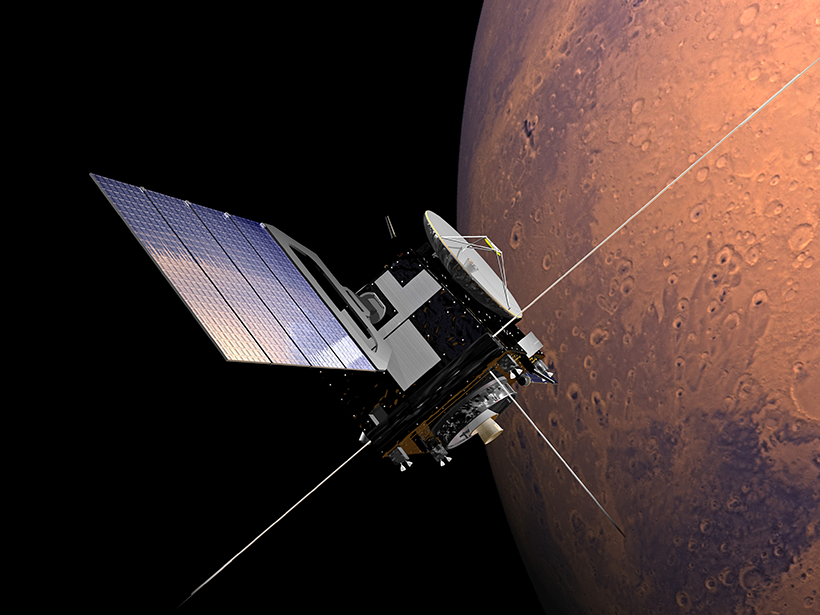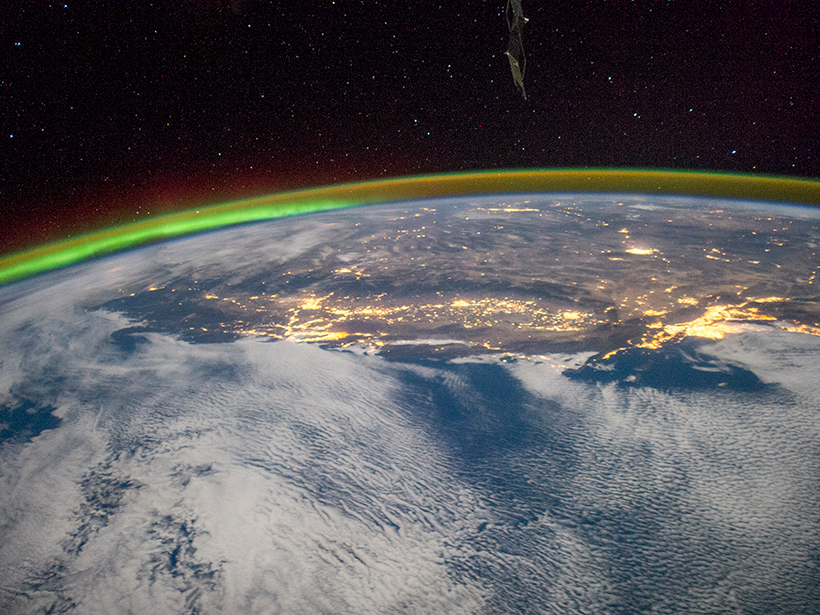The radar aboard the Mars Express spacecraft can generate ion beams arcing through space above the planet, which could lead to a new way of studying the plasma surrounding it.
Mark Zastrow
Eos Freelance Writer
Space Weather Threat to Australian Power Networks Assessed
Power companies should be cautious during severe solar storms to maintain the integrity of Australia’s power grid, a new study finds.
Is There a Greenhouse Effect in the Ionosphere, Too? Likely Not
Controversial observations of long-term changes in the ionosphere appear to be explained by the Sun’s 11-year cycle of activity, not human greenhouse gas emissions.
Probing the Cusps of Saturn’s Magnetic Field
Data from the Cassini spacecraft show that the cusp regions of Saturn’s magnetic field—where it connects to the Sun’s magnetic field—have similarities to Earth’s and also intriguing differences.
Juno Gets Spectacular View of Jupiter’s Aurora
The NASA spacecraft has taken images of Jupiter’s powerful aurora dancing around its poles, revealing never-before-seen details in their structure.
Mystery of the Ionosphere’s “Gyro Line” Solved
A new study provides an updated hypothesis to describe a unique radar signature from plasma waves high above Earth, correcting errors that had stood for decades.
Simulations Give New View of Global Auroral Storms
New computer models capture the movement of the strongest auroral storms as they sweep across Earth at night, challenging scientists’ views of what drives them.
Where Are the Electrical Currents in the Enceladus Plume?
A plume of water ice that escapes Saturn’s moon Enceladus should be coursing with electrical currents, but data are mixed. Now simulations suggest that a sticky dust cloud may shield signals.
How Storm Turbulence Can Spark Lightning
The turbulent pockets of air inside storms can help to build up static electricity in the atmosphere, according to a new study.
Curiosity Spies Shifting Sands on Mars
Images from the rover’s pioneering encounter with sand dunes on Mars constrain wind speeds required to move sand in the thin Martian atmosphere.










